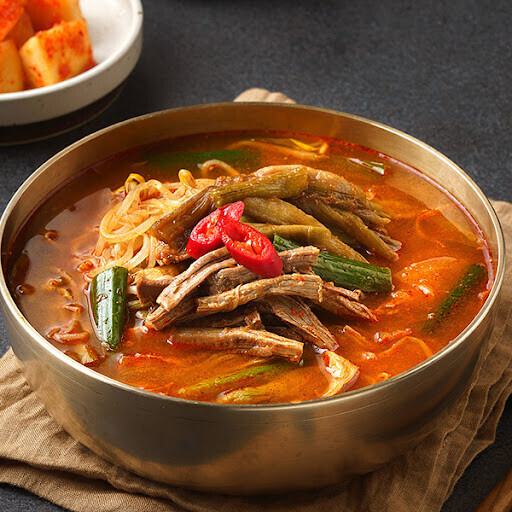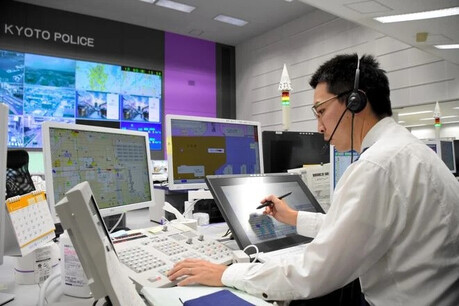
Yukgaejang, a hearty Korean beef soup, has captured the palates of food lovers worldwide with its bold flavors and comforting warmth. But what is the story behind this beloved dish?
A Historical Twist The origins of yukgaejang can be traced back to the traditional Korean dish, gaejang, or dog meat soup. As the name suggests, gaejang was a popular summer dish believed to provide health benefits. However, as societal attitudes towards dog meat consumption evolved, people began to seek alternatives.
To satisfy the cravings for a similar flavor profile, beef was substituted for dog meat in gaejang, giving birth to yukgaejang, which literally translates to "beef gaejang". The transition from dog meat to beef marked a significant shift in Korean culinary history, reflecting changing cultural norms and dietary preferences.
A Flavorful Fusion Yukgaejang is characterized by its rich, deep red broth, tender beef, and a medley of vegetables. The soup is typically seasoned with a blend of chili peppers, garlic, and other aromatic spices, creating a spicy and flavorful experience. Common ingredients include well-marinated beef, onions, green onions, bean sprouts, and sometimes, enoki mushrooms.
How to Make Yukgaejang To make yukgaejang, beef is typically marinated in a mixture of soy sauce, garlic, and ginger. The marinated beef is then sautéed until browned, and the vegetables are added. A flavorful broth is prepared using beef bones, and various spices and seasonings are added to create the signature red color and spicy taste. The soup is simmered for an extended period to allow the flavors to meld together.
A Modern Culinary Staple Today, yukgaejang has evolved beyond its humble beginnings and is now a beloved dish enjoyed by people of all ages. It can be found in traditional Korean restaurants and modern eateries alike. The soup's hearty nature and bold flavors make it a popular choice for cold winter days or as a comforting meal anytime.
Regional Variations: Explore how yukgaejang is prepared differently in various regions of Korea.
Nutritional Benefits: Discuss the potential health benefits associated with consuming yukgaejang, such as its protein content and immune-boosting properties.
Serving Suggestions: Offer suggestions on how to best enjoy yukgaejang, such as with rice or as part of a larger meal.
source : Global Economic Times(https://www.globaleconomictimes.kr)
[Copyright (c) Global Economic Times. All Rights Reserved.]





























